“This Was ‘The Paris of South America'”
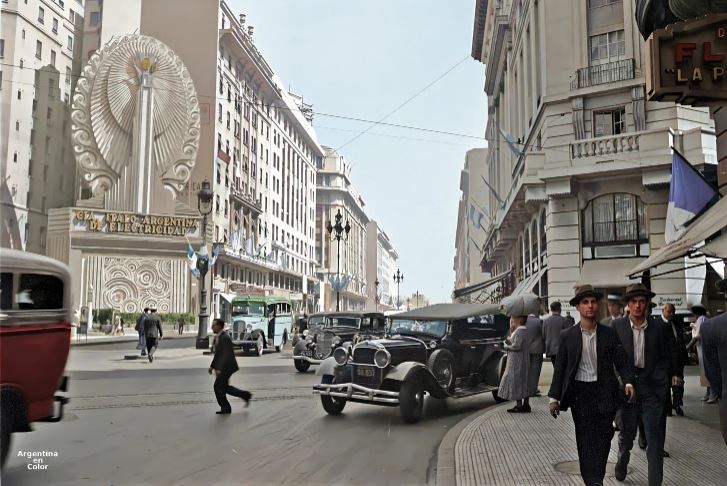
Originally published on Substack
So what happened to it?
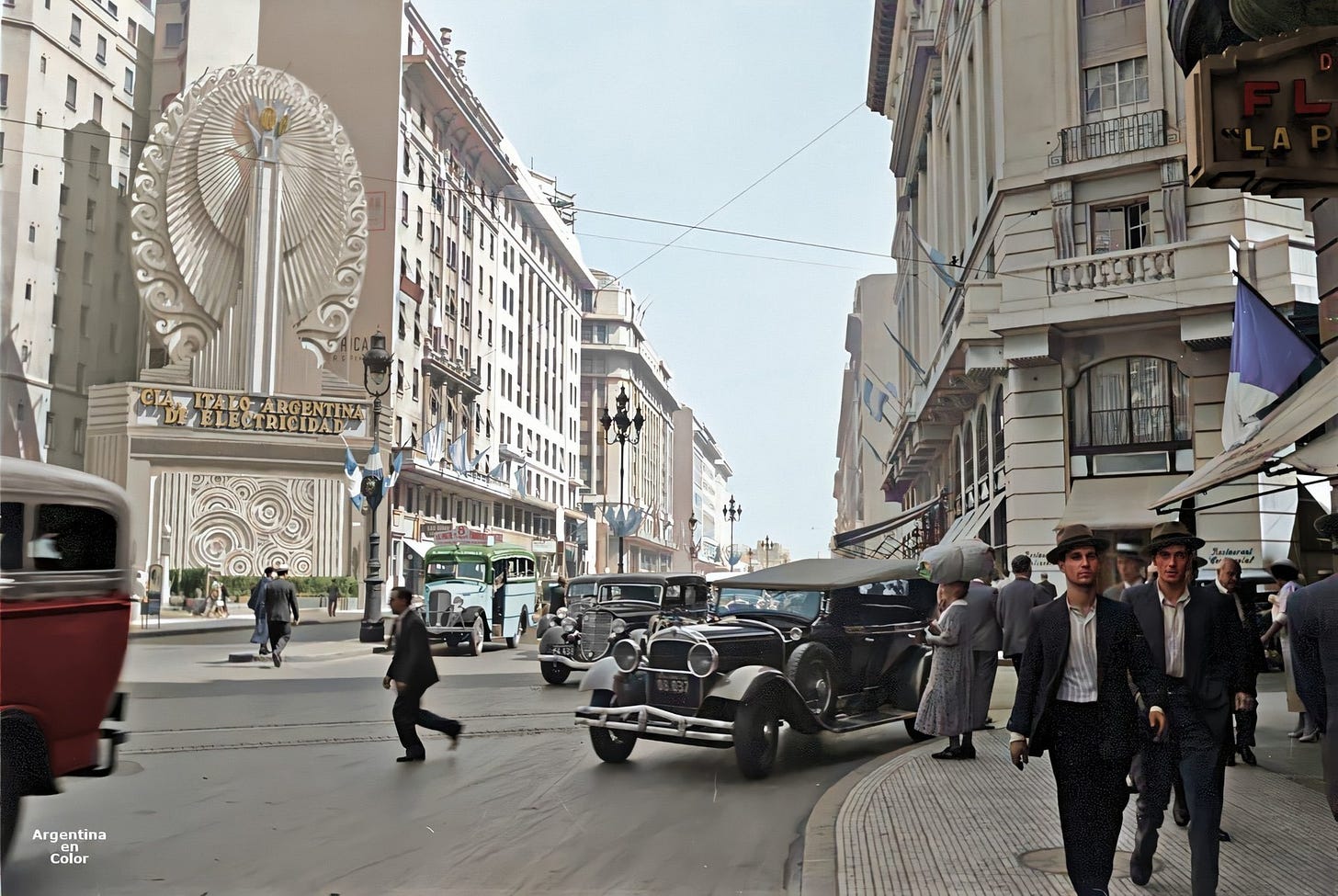
When you think of cities that dominate the international landscape of culture, commerce and politics, does Buenos Aires make the list?
Well, a century ago, Argentina was a world power that rivaled the United States — with a capital city to rival the Queen of Europe, Paris.
So how did such an unlikely city rise to prominence, and what caused its fall?
And what can “the Paris of South America” teach us about the fragility — and resilience — of culture?
A New City of Light

The late 1800s saw the world turn its eyes to one of the most glittering up-and-coming cities of the day. Buenos Aires was an irresistible magnet, not only for culture builders like artists, architects, musicians, dancers, and chefs, but for businessmen and investors as well.
During the Belle Époque of Argentina’s late 19th and early 20th centuries, 4 million Europeans flocked to the blossoming country — and they brought the riches of the industrial age with them. Argentina’s GDP exploded at a staggering 6% annual increase in the 43 years leading up to 1914 (the fastest in the world), putting Argentina on par with the U.S. in terms of per capita wealth.

With industrialization helping to maximize the country’s rich natural resources and becoming a preferred trading partner of Europe, Argentina became not only a world power to rival the U.S, but an international byword. Entrepreneurs dreamed of being “as rich as an Argentine”, a phrase which made its way into the vernacular of both Americans and Europeans.
But wealth wasn’t the only boast of Buenos Aires. As a destination for Spanish, Italian, and French immigrants, the new City of Light was also a beacon of artistic excellence and cultural energy.
Dark Years and Dirty Wars
Unfortunately, not all this was to last. New immigrants to Argentina brought with them anarchist and communist ideals. Though the country had already enshrined workers’ right to strike and mandated a minimum wage, activists demanded further action. Political tensions began to rise, slowly but surely setting the stage for what would be a decades-long disintegration of Argentine peace.
When the Great Depression devastated Argentina’s economy, a new faction of leaders seized on the opportunity to conduct a military coup and oust the government in power. They then led the country into what became known as the Infamous Decade, marked by corruption, election fraud, and the execution of the government’s suspected political opponents.
Militarists and idealogues clashed for power over the ensuing decades. Many Argentinians found hope in President Juan Perón (in office 1946-1955), but despite his popularity, Perón’s election was followed by years of ruinous spending. The peso lost 70% of its value, and inflation had reached 50% by 1951.
Argentina’s economic hardships fuelled its political instability. The cycle of coups, corrupt governments, and crushing poverty broke out into political massacres, guerrilla warfare, and bombings. This violence culminated in the guerra sucia, or “Dirty War,” from 1974 to 1983 — a period of state terrorism in which the government authorized death squads to hunt down and kill 30,000 people suspected of left-wing sympathies.
After 1983, Argentina’s cultural vitality began to blossom once more as democracy slowly returned. Wealth, however, never did. By 2002, the country was entrenched in an economic depression so pervasive that 7 out of 10 Argentinian children lived in poverty.
History Through Architecture

Decades of troubled history have left their mark on Buenos Aires, but the city’s cultural richness is still visible beneath. Like all cities, the architecture of Buenos Aires tells the story of its history for those who know how to read it.
Influenced by its French, Italian, and Spanish heritage, the city’s buildings reflect the historical movements of Europe as well as Argentina’s unique history. Neoclassical design, for example, is showcased in buildings such as the National Congress, the Teatro Colón, and the Casa Rosada. Art Nouveau is seen in buildings such as the Güemes Gallery and Palacio Barolo, and even echoes of Gaudì are found in the Casa de los Lirios, aka the “House of Lilies”.
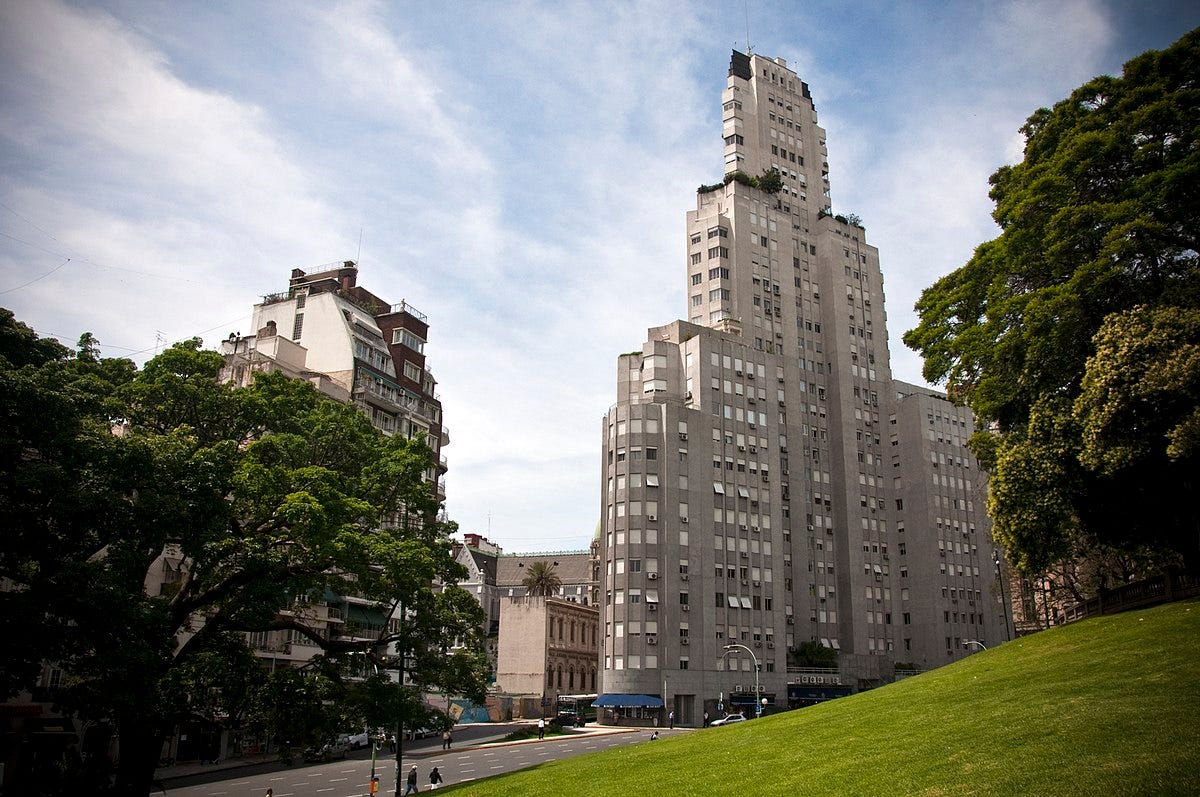
Moving into the modern era, the Kavanagh building is an exemplar of Rationalism (a pre-modernist movement that emphasized minimalism and geometry) and was once the largest reinforced concrete structure in the world.
In many ways, the architecture of Buenos Aires is nothing less than a documentation of the architecture of Europe — but with its own wonderful twists.
Change, Caution, and Culture
Argentina’s history shows the double-edged sword of cultural progress. Rapid change enriched the country, yet also undermined and ultimately destroyed it.
After World War II, America and Argentina were no longer equals. The former’s financial boom led her to take off in one direction, while the latter’s financial woes and political turmoil caused her to take off in the other.
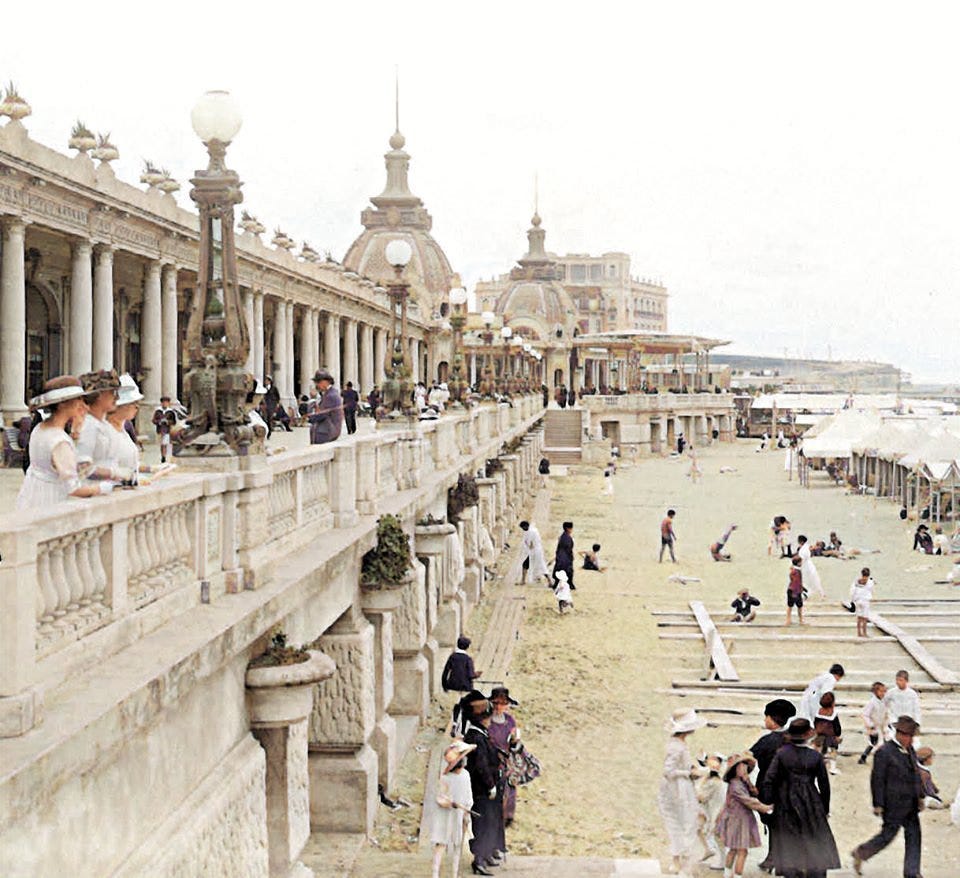
Interestingly though, at the same time that a culture of convenience began to uglify so many American cities in the post-war period, Buenos Aires held fast to its beautiful heritage by maintaining its astounding buildings, sweeping parks, and centuries-old restaurants.
No one would ever wish for the kind of conflict Argentina endured in the 20th century, yet her story leads one to ask: is economic success always good for culture? To what degree might hardship in fact sharpen our focus on what’s culturally important?
And most importantly, how can we imitate the beauty of Buenos Aires in our own cities?
Art of the Week
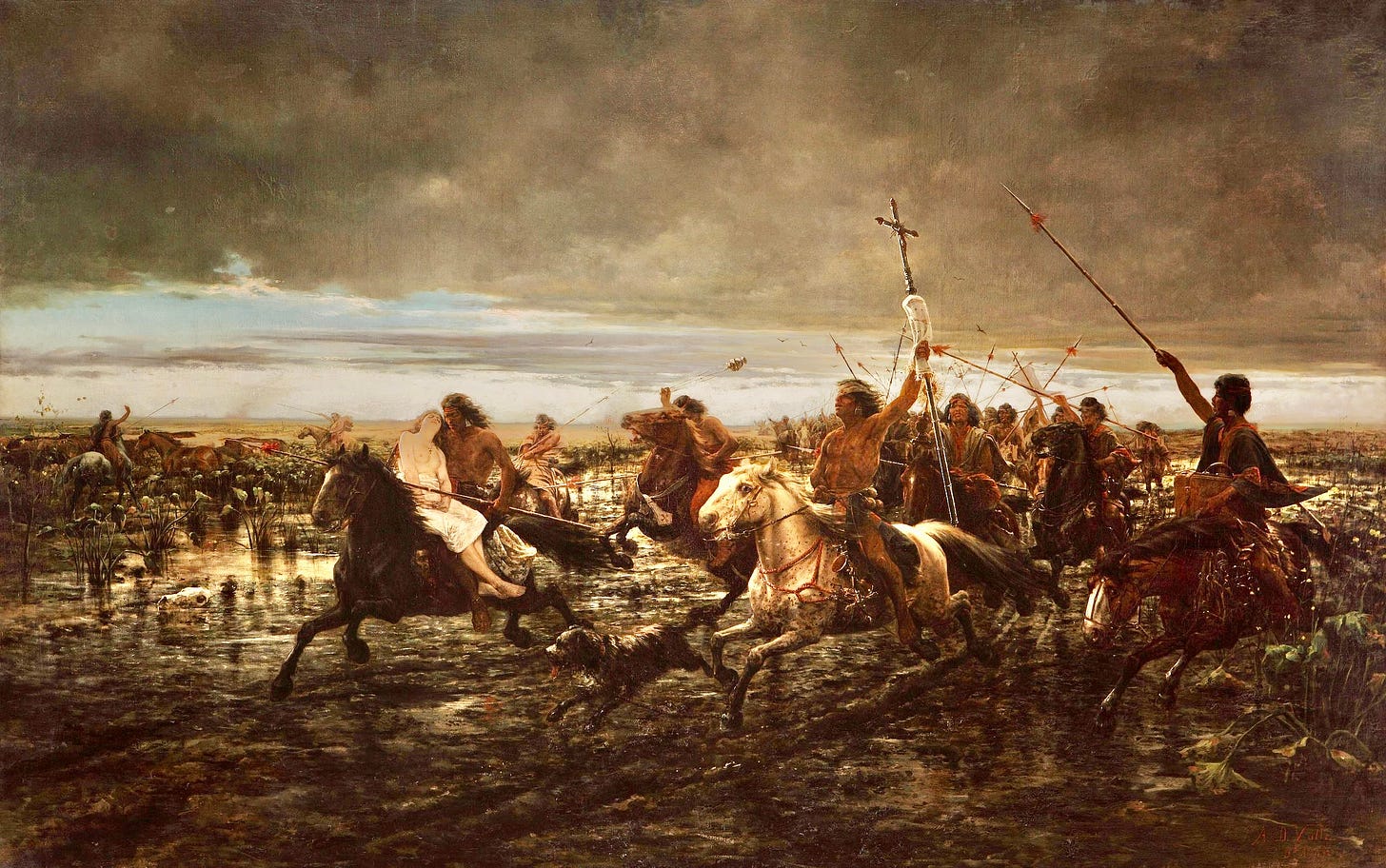
Born in 1850 to the son of Italian immigrants in Argentina, Della Valle testifies to the cultural wealth that Europeans brought with them to South America.
Della Valle’s The Return of the Malón is considered Argentina’s first national work of art, putting Argentina on the artistic map and garnering international acclaim. It depicts a malón, a raiding party of indigenous warriors. Argentinian frontier towns lived in fear of these raiders, who stole livestock and kidnapped women.
While the painting taps into some elements of realism, such as Vella’s meticulous landscape detail, a Romantic theme also haunts the image: the glowing figure of the kidnapped woman and the warlike energy of the warriors and horses find drama and even beauty in the harrowing adventure of life on the Pampas.
A closer look at the riders reveals them to be carrying censers, an indication that they have just raided a church. Most notably, however, is the sky, taking up half of the painting.
The sky is punctuated by only two objects: a spear and a cross — two juxtaposed symbols of barbarity and civilization…
Reminder:
This Saturday, I’m exploring the history of the world in 5 iconic nudes that span 40,000 years. They reveal as much about the cultures that created them as the subjects themselves…
Join the premium list to read it — and help support the mission!




